Family foster care or residential care: the impact of home environment on children raised in state care
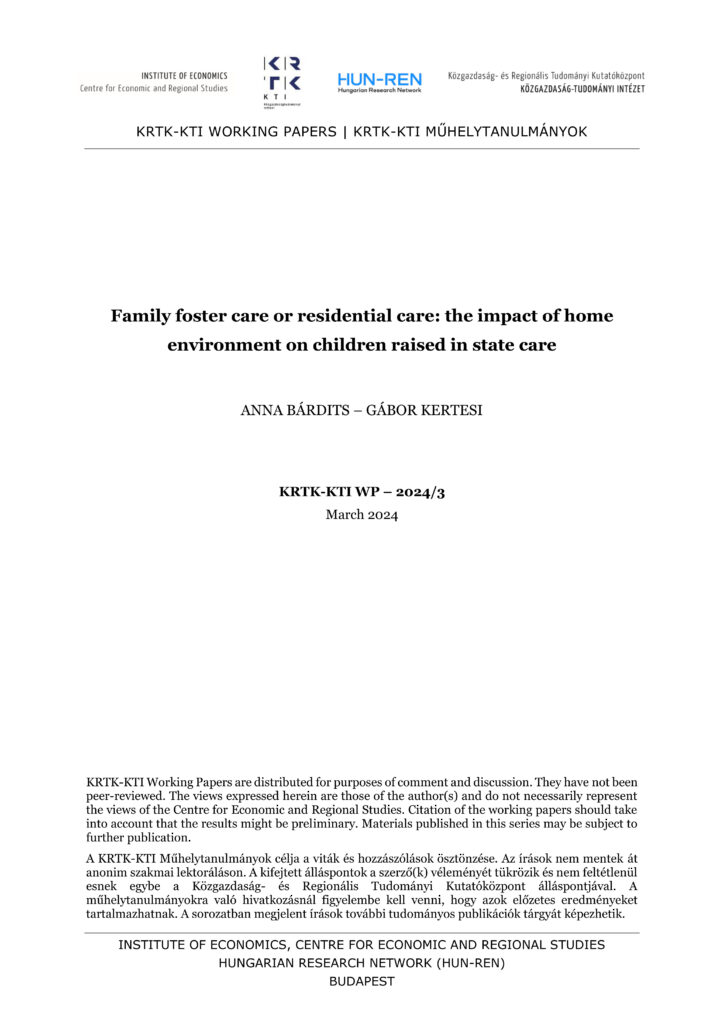
This paper investigates how the type of home environment – family foster care or residential care – affects the adult outcomes of individuals who were raised in state care during adolescence. While it is established in the literature that living in residential care is detrimental for babies, the effect of living in different types of […]
Statistical overstatement of average wages and its impact on pensions: the case of Hungary

In Hungary, initial pensions are indexed to average net wages, reported by official earnings statistics (ES), which does not cover the economy as whole. However, there is alternative statistical source on labour income, the national accounts (NA), intended to cover the total economy. The latter indicate a markedly lower rate of growth in wages than […]
John von Neumann’s game-theoretic legacy
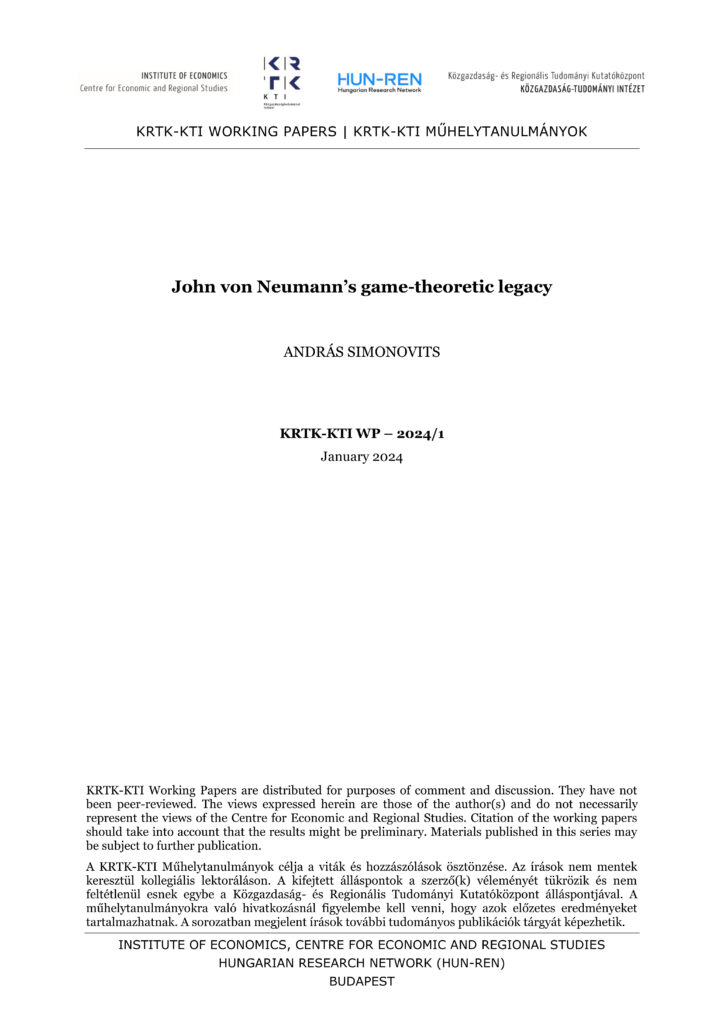
John von Neumann (Budapest, 1903–Washington D.C., 1957) was an exceptional polymath, who made fundamental contributions to mathematical logics, functional analysis, quantum mechanics, game theory, computer architecture and automata theory. In this brief paper, I shall review the game-theoretic results of von Neumann and their legacy in an informal way.
Comparative analysis of the evolution of the CE4 countries’ national innovation systems and their innovation performance in 2000–2020
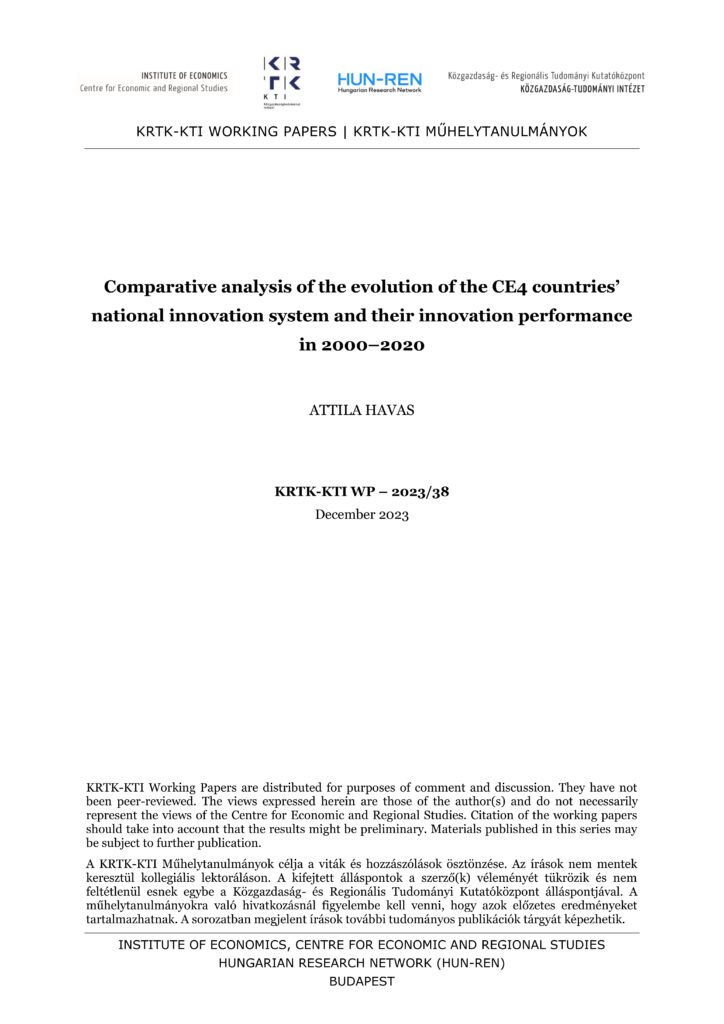
This paper compares the evolution of CE4 countries’ (Czechia, Hungary, Poland, and Slovakia) national innovation systems, as well as their innovation performance. Its analytical framework draws on evolutionary (and institutional) economics of innovation. Given the structural features and the level of socio-economic development in the CE4 countries, as well as the dominant way of thinking […]
Futures of the interpenetration of criminal and lawful economic activities in the European Union in 2035: Scenarios and policy implications
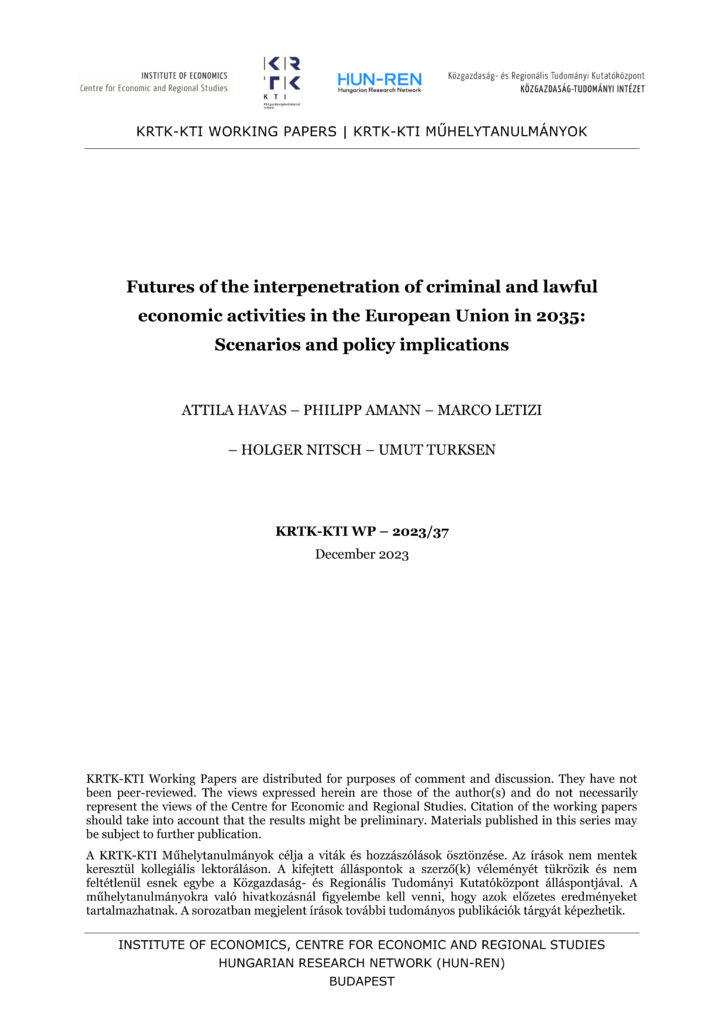
Policy-makers – working on various domains, notably regulations, home affairs, security, science, technology, and innovation (STI) policies – need to pay close attention to possible new ways and methods for the interpenetration of criminal and lawful economic activities. This paper is aimed at assisting these policy-makers by presenting four possible futures (scenarios) on the interpenetration […]
Does cutting the value of unemployment insurance benefits affect take-up? Evidence from Hungary
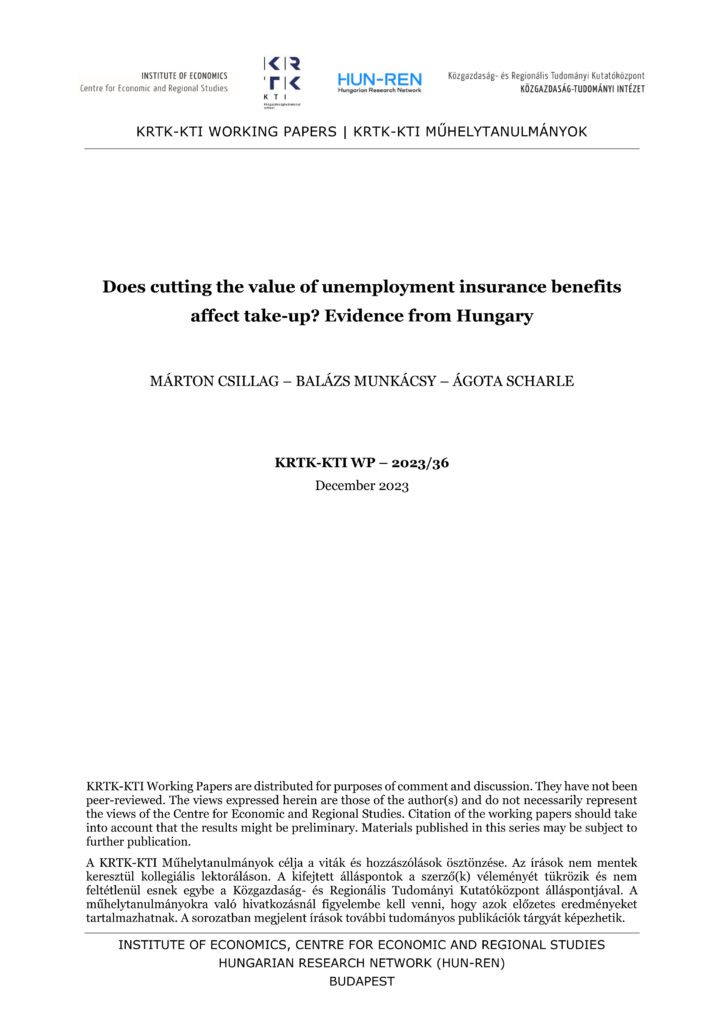
Does a drastic cut in in potential benefit duration affect the take-up of unemployment insurance benefits among those eligible? We evaluate a policy change reducing the maximum length of UI benefits from 9 to 3 months in Hungary at the end of 2011. We rely on rich longitudinal matched administrative data, which allows us to […]
Corruption Risk and Education at Regional Level

In this study, we investigate the correlation between corruption risk and the level of education in European sub-national regions (NUTS2 level) between 2006 and 2020 in 16 member countries. We use the data of Tenders Electronic Daily (TED) covering the parameters of 6,766,274 public procurement contracts in total and NUTS2 level Eurostat data. We found […]
A területi béregyenlőtlenségek összetevői
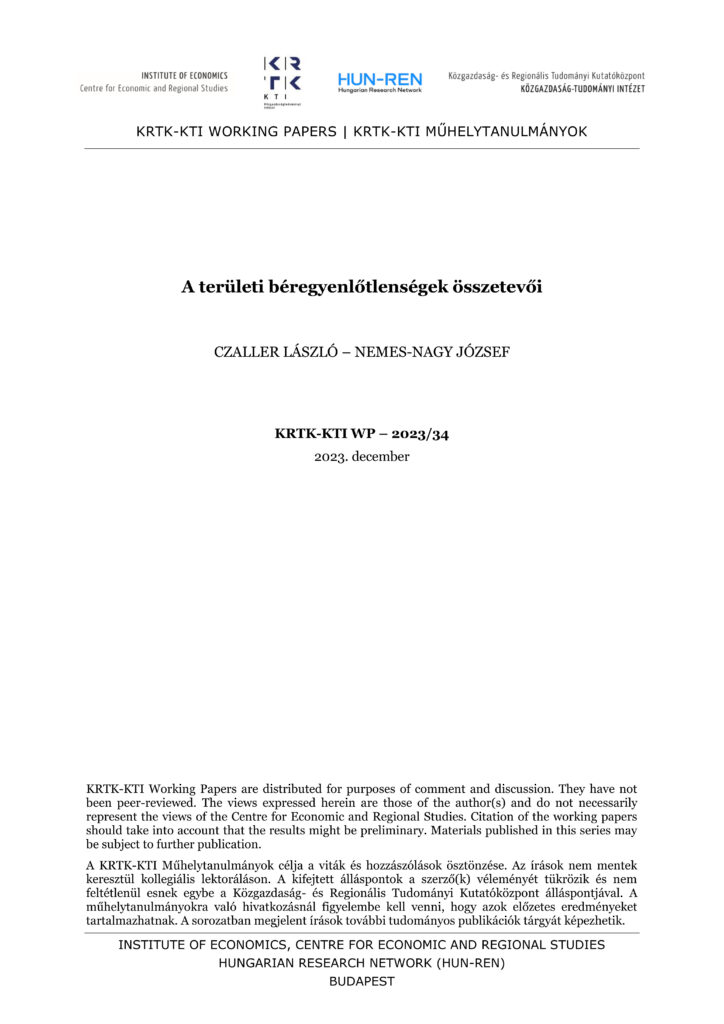
Ebben a tanulmányban azt vizsgáljuk, hogy a munkavállalók és a járások szintjén megfigyelt béregyenlőtlenségeknek mekkora hányadát magyarázzák a munkavállalói és munkáltatói jellemzők, illetve a térségek eltérő adottságai. Ehhez a Pénzügyminisztérium bértarifa-felvételét használjuk fel, ami részletes adatokkal szolgál a munkavállalók keresetéről, egyéni jellemzőiről, illetve a munkáltatókról. Eredményeink azt mutatják, hogy az egyének szintjén megfigyelt bérkülönbségek magyarázatában […]
Testing Corruption Indicators: Statistical Analysis of a Hungarian Cartel

The study analyzes the reliability of corruption risk indicators using Hungarian public procurement data, specifically focusing on EU-funded contracts associated with a cartel case revealed by the Hungarian Competition Authority (HCA) in 2016. The investigation aims to determine whether corruption risk indicators for public procurement contracts related to the identified cartel case (214 contracts) are […]
MUNKAERŐPIACI TÜKÖR 2022

Kötetünk ebben az évben a társadalmi egyenlőtlenségek és a társadalmi mobilitás témakörét járja körül. Széles áttekintést nyújt a témában elérhető közgazdasági és szociológiai elemzésekből, amelyek segítségével végig veszi az emberi élet szakaszait a születéstől az időskorig. Minden életszakaszban a jellemző társadalmi egyenlőtlenségi dimenziókat elemzi, gyermekkorban például az oktatásban, felnőttkorban a munkaerőpiacon, időskorban pedig a nyugdíjrendszerben megfigyelhető társadalmi egyenlőtlenségekre mutat rá. A kötet […]
The effect of temperature on birth rates in Europe

Using data from 32 European countries for nearly 244 million live births between 1969 and 2021, this paper examines the effects of temperatures on birth rates. The results show that exposure to hot days slightly reduces birth rates five to eight months later, while much stronger negative effects are observed nine to ten months after […]
The Aftermaths of Lowering the School Leaving Age – Effects on Roma Youth

In 2013, the Hungarian government cut the school leaving age from 18 to 16. We study the impact of this unique reform on the country’s sizeable Roma minority using census data on the universe of 17-year-olds in 2011 and a 10 percent random sample in 2016. School attendance fell by more than 20 percentage points […]





